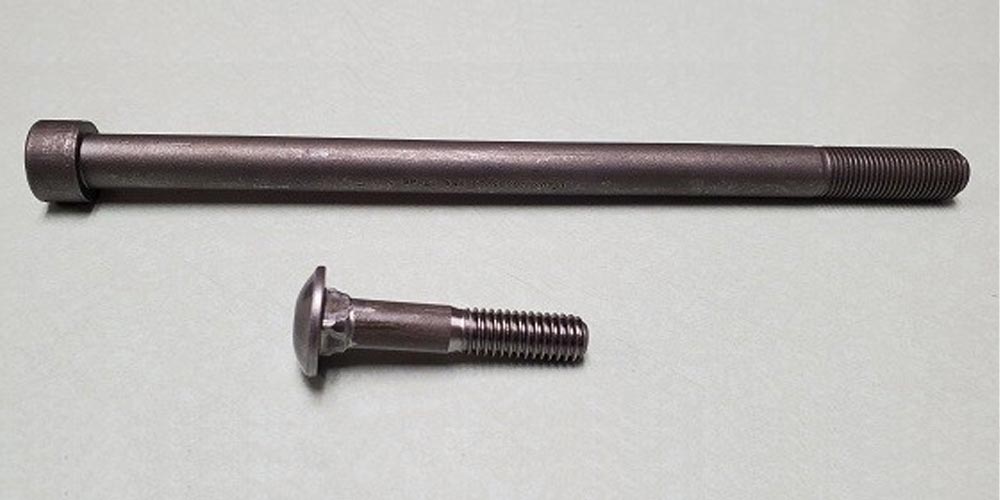As with so many things in the fastener world, the answer to “What’s the difference between a bolt and a screw?” can best be answered by saying, “It depends on who you ask.”
Most people have an idea in their head of what a bolt is and what a screw is. However, there are such a wide variety of both bolts and screws that it can be difficult to look at a particular fastener and know which one it is. This article should provide some guidance.
One Government Agency’s Opinion
Here’s a publication from the US Customs and Border Protection (CBP) titled “Distinguishing Bolts from Screws” from July 2012. This is a short document that lays out a procedure to determine the identity of an item based on visual inspection and design criteria. The technical content and illustrations are drawn from the ANSI-ASME B18.2.1 specification and the Industrial Fastener Institute Fastener Standards. These are excellent references, and we highly recommend them to those who might need more detailed information.
The CBP publication lays out four primary criteria to identify an externally threaded fastener as a bolt or a screw. If the identity cannot be determined by the primary criteria, the document provides nine supplementary criteria. For the purposes of this article, we will focus on the four primary criteria in some depth and give a brief summary of the nine supplementary criteria.
Bolt vs. Screw: Definitions
Let’s begin with a couple of definitions provided by the CBP which are quoted from ANSI-ASME B18.2.1:
- Bolt: A bolt is an externally threaded fastener designed for insertion through the holes in assembled parts, and is normally intended to be tightened or released by torquing a nut.
- Screw: A screw is an externally threaded fastener capable of being inserted into holes in assembled parts, of mating with a preformed internal thread or forming its own thread, and of being tightened or released by torquing the head.
A bolt is meant to be used with a nut, and it is tightened by torquing the nut. A screw is designed to be used in either a preformed or threaded hole, or it is capable of forming its own threaded hole. A screw is designed to be tightened by torquing the head.
RELATED: Need a specialty bolt, screw, or stud? Wilson-Garner can help.
Bolt vs. Screw: Four Primary Criteria
The four primary criteria are based on the root of the two definitions above. Each of the four criteria essentially attempts to confirm a key element of one definition or the other. If a part in question clearly satisfies any of the four criteria, it can be identified without any further examination.
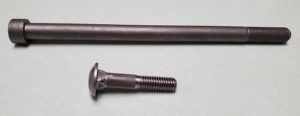
Criterion 1 — Bolt
If the fastener in question has a head or other design feature that prevents turning during assembly and which can be tightened only by turning a nut, then the fastener is a bolt. This criterion is a process of elimination. Screws are designed to be tightened by turning the head, so if you can’t turn the head, the part must be a bolt.
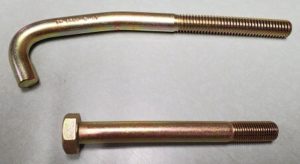
Criterion Two — Bolt
If an externally threaded fastener has an intended function that requires it to be assembled with a nut, then the fastener is a bolt. This criterion obviously requires knowledge of the intended function of the fastener in question.
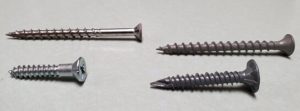
Criterion Three — Screw
If the fastener in question has a thread form that prohibits it from being assembled with a nut, then the part is a screw. This is another process of elimination situation. If the threads of a part prevent the part from being used with a nut, then the part cannot be a bolt and must be a screw.
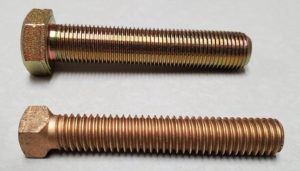
Criterion Four — Screw
If the fastener is designed to be torqued by its head into a tapped or preformed hole, then the fastener is a screw. Again, knowing the intended function of a part can be tremendously helpful. Any part designed to be torqued by the head into a tapped hole is a screw.
Bolt vs. Screw: Nine Supplementary Criteria
If you cannot determine that a part meets any of the four primary criteria, there are nine supplementary criteria that you can examine. A fastener that satisfies five of the nine supplementary criteria can be classified as a screw.
In general terms, screws are more tightly toleranced than bolts. If you have access to the blueprint or spec for the part in question, you can compare the tolerances to those of industry-standard tolerances for bolts and screws to determine which is closer to the part in question.
- Point – The configuration at the end of the shank has a chamfer or other specially prepared point at its end to facilitate entry into the hole and engagement with the internal thread.
- Bearing Surface – The under-head bearing surface should be smooth and flat to reduce friction or scoring when tightening the head.
- Under-Head Fillet Radius – The angle of the junction of the head with the body should be controlled to ensure proper seating of the head.
- Head Angularity – The squareness of the underhead bearing surface with the shank should be controlled to ensure proper seating.
- Thread Concentricity – Threads should be concentric with the body axis.
- Thread Length – Measured as the axial length of the full form threads in addition to up to two incomplete threads at the start of the thread, the thread length should be sufficient to fully engage with the tapped hole.
- Body – The body, or unthreaded part of the shank, should be controlled in size and roundness to fit into tightly toleranced holes.
- Shank Straightness – The shank should not have a bow or camber that would prevent it from fitting into tightly toleranced holes.
- Length – The overall length should be controlled to prevent the screw from bottoming out in the hole.
A Small Disclaimer
One final thought before we wrap up: All of the criteria listed above are taken from a publication from the US Customs and Border Protection. We like it because it is reasonably clear and concise. For customs applications, this is a great document.
However, there are plenty of other opinions out there regarding the difference between a bolt and a screw, and the criteria that defines each fastener. So, don’t take this one as definitive if you’ve got a document more specific to your situation that is telling you something different.
Questions? Contact Us
At Wilson-Garner, we’re happy to help answer any questions you may have about fasteners — whether that’s the difference between a bolt and a screw, what in the world “proof load” means, or what our custom manufacturing capabilities are. Give us a call or reach out to us online and we’ll get back to you as soon as possible.
